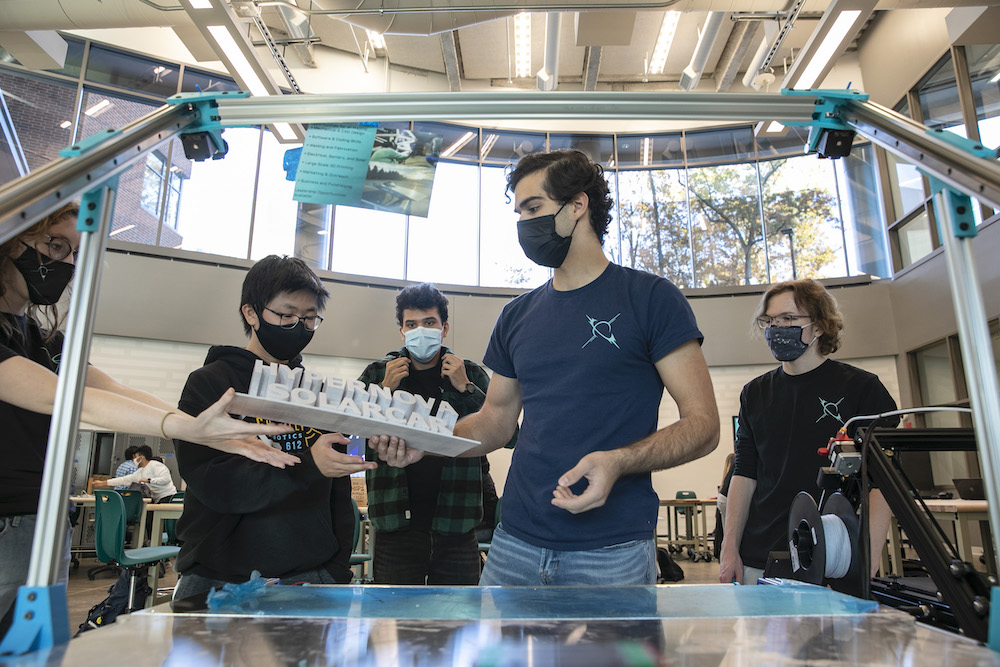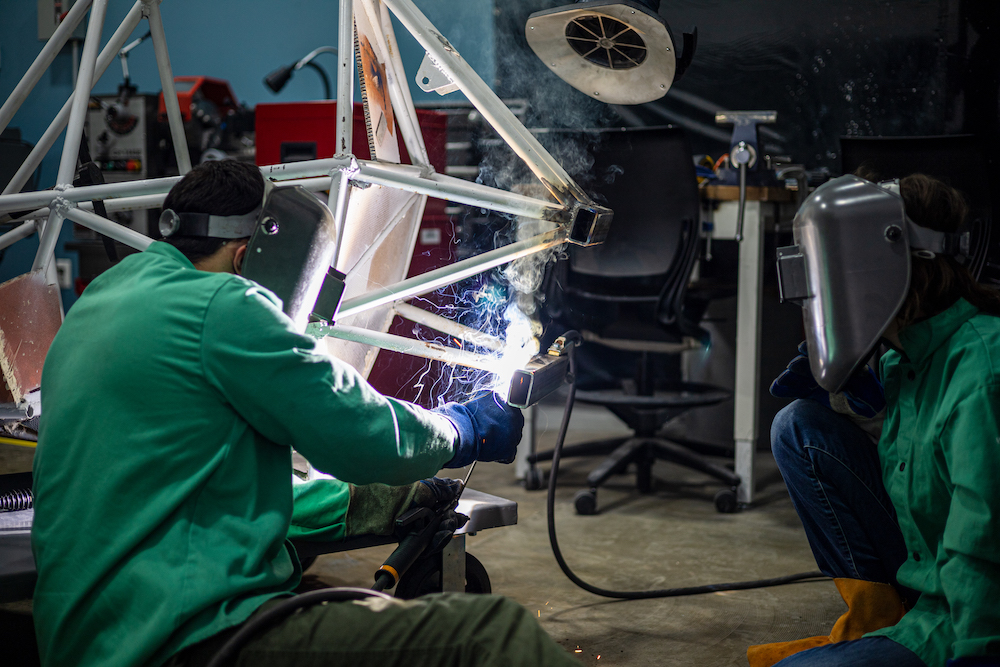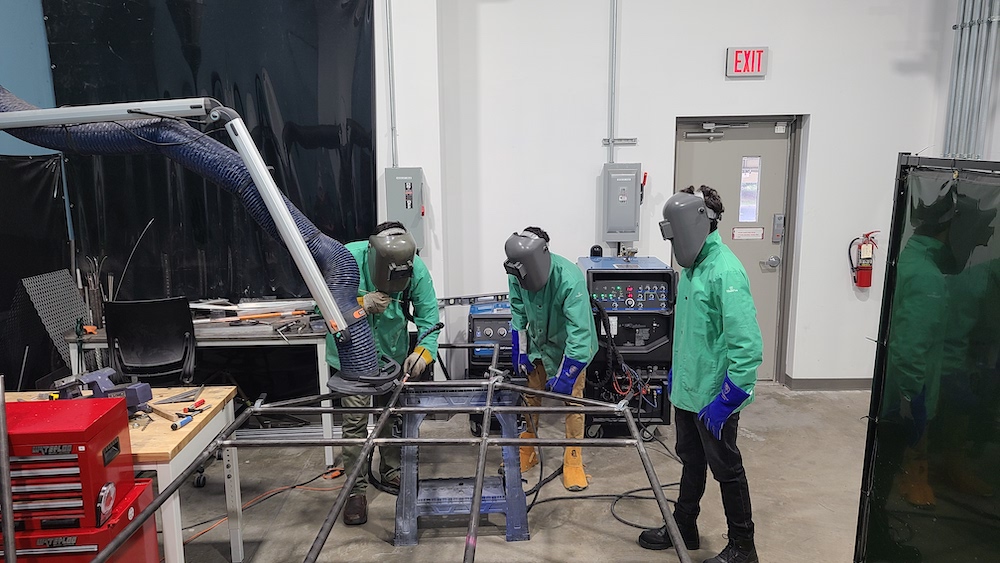In This Story

Most people with access to a 3D printer find themselves creating small objects or gadgets. But one student group working at the MIX at George Mason University each Friday is driven by a different dream.
“We build, design, test and plan to compete in solar-powered car competitions,” said Michael Riggi, president of Mason’s solar car team, Hypernova Solar. “[We believe] our car, when complete, will be the world’s first and only 3D-printed solar car.”
Riggi, a junior studying systems engineering, said the team aspires to compete in the American Solar Challenge, which involves racing a couple thousand miles across the country against other university teams. Their subsequent goal is to race in the World Solar Challenge in Australia.
When Hypernova Solar was founded in 2019 by Mason alum Alex Hughes (BS Bioengineering, Honors College '21), Riggi said the group laid the logistical groundwork for parts, designs, and fundraising. Today, the group’s 50 members comprise everyone from Mason freshmen to seniors, and a few students from Northern Virginia Community College (NVCC) and local high schools.
Their momentum has been strong.
“We’re in the process of building our own car, Hypernova One, that we plan to complete in about a year,” Riggi said, adding that the car’s steel frame that they weld on Mason’s Science and Technology Campus is halfway done.


Hypernova One will be the team’s proof-of-concept car, he said. Once it’s complete, they’ll review it to see what could be done better, and then build a second car for competition.
The group has also been working on a car that was donated to them in 2020 from the University of California, Berkeley team.
“We’ve completely revamped the suspension, the motors, the aeroshell and repainted it,” Riggi said of the 10-year-old vehicle they renamed Orion. “It gave everyone a good experience on what actually goes into a solar car.”

They’ve also been benefiting from Mason’s resources and experts.
“My systems engineering coursework has helped me manage the team, understand business concepts, as well as understand the engineering aspects and challenges presented to us,” Riggi said. “I’ve also taken a MIX workshop on 3D printing and am applying this knowledge to building a 3D belt printer to create the shell of our first car.”
Why is the team developing their own 3D printer?
“Unlike a 3D printer where you’re printing layer by layer going up, ours is tilted at a 45-degree angle and prints on a conveyor belt, so you can actually print on an unlimited axis,” said Ross Clark, Hypernova Solar’s lead designer and a NVCC student who said he’s transferring to Mason.
The unique printer helps make the car resilient and safe, he said. Printing vertically would make it more susceptible to breaking along the X-axis.
“The shell is going to be sturdy and meet safety regulations,” Clark said. “We’re also using a special plastic, PETG, which doesn’t break, it flexes more, and is a lot more heat resistant.”
“The opportunity to build a unique machine like this is a huge draw to a diverse group of students,” said Reagle, who teaches in the Department of Mechanical Engineering. “I can’t wait until you see them rolling around campus in this vehicle inspiring the next surge of students.”

Overall, Hypernova Solar is about more than just building cars.
“The most rewarding part is seeing progress on the car and watching team members develop new skills,” Riggi said. “Our goal is to develop the skills of the students, make them more well-prepared for the workforce, and also just make friends.”
In addition to the thrill of problem solving, and the joy of mentoring new members, Clark and Riggi said another benefit is the group’s inclusivity.
“We have a spot for everyone—even if you’re not an engineering major,” Riggi said. “Some members aren’t huge car people, but want to develop personal skills, or do business and fundraising.”
“That’s why I love this project so much,” he said, “you can tailor it to what you want to get out of it.”

